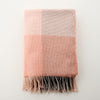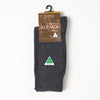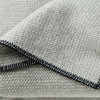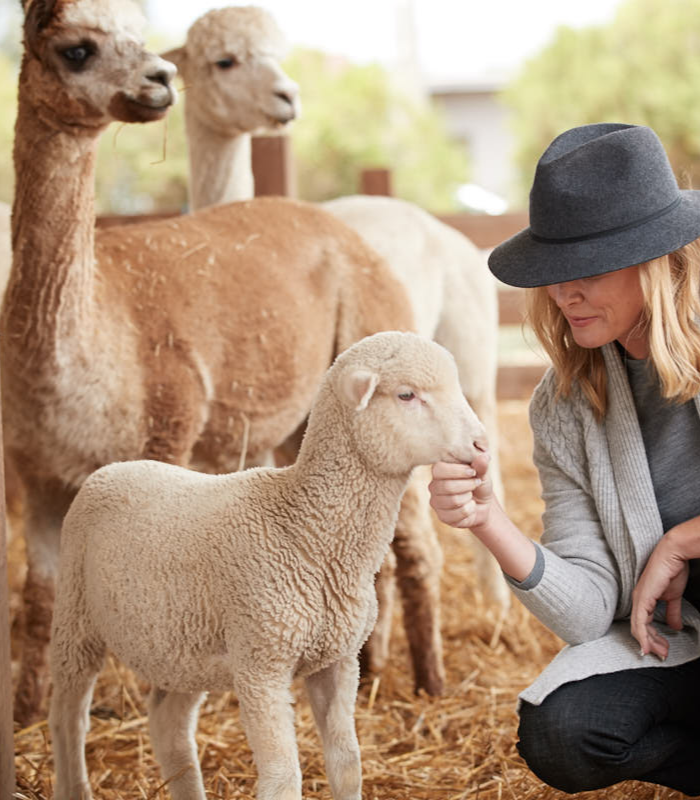Is Merino Wool good for the skin?
Merino wool clothes are super breathable, whether it's hot, cold, humid, or dry. They can soak up and release moisture vapor way better than cotton or polyester. When you wear wool close to your skin, it helps balance out the temperature and humidity around you, acting like a comfy buffer. For people with dry skin, it's like having a second skin that feels just right.
Research has found that wearing Merino wool directly on the skin can help people with eczema feel better. This adds to other studies showing how Merino wool can be good for our health. It turns out that Merino wool can actually help those dealing with eczema, even though many people think wool is always scratchy and uncomfortable.
Wool is naturally resistant to odors, making it a top choice for garments that stay fresh longer. Unlike synthetic fabrics, which can trap odors and bacteria, wool has unique properties that inhibit the growth of odor-causing microbes. This natural resistance allows wool clothing to remain odor-free even after prolonged wear, making it ideal for active lifestyles and outdoor activities. Whether you're hitting the trails or lounging at home, wool keeps you feeling and smelling fresh throughout the day.
Among materials, Merino wool is unique in that it keeps you feeling fresh for longer periods of time. Because of its inherent qualities, it can effectively regulate moisture and odor, keeping you comfortable all day. Wool aggressively draws moisture away from the body to prevent the growth of bacteria that create scents, in contrast to synthetic fibers that have a tendency to retain sweat and aromas. Furthermore, wool's capacity to regulate temperature and breathability add to the impression of freshness, whether you're venturing outside or spending a busy day indoors. Wool ensures comfort and long-lasting freshness regardless of the activity.
Is Merino wool 100% Biodegradable?
Since wool is completely biodegradable, it is a shining example of sustainability in the textile sector. Wool is produced from sheep, a sustainable resource, as opposed to synthetic fibers, which are derived from petroleum-based sources.
Merino Wool decomposes organically and returns to the soil after disposal without producing any hazardous byproducts. This intrinsic biodegradability closes the circle on the lifecycle of wool goods, reducing environmental impact while also promoting the circular economy. Whether it's soft blankets or warm sweaters, dressing in wool guarantees that your clothes will have the least possible environmental impact, representing a dedication to sustainable living and environmental care.
Merino Wool biodegrades through a natural process orchestrated by microorganisms in the environment. When wool products are discarded and exposed to moisture, heat, and microbial activity, the fibers begin to break down gradually. These microorganisms, including bacteria and fungi, secrete enzymes that break down the complex protein structure of wool into simpler organic compounds. Over time, the wool fibers decompose into carbon dioxide, water, and organic matter, returning to the soil as nutrients for plants. This process typically takes several months to a few years, depending on various factors such as environmental conditions and the composition of the wool product. Ultimately, wool's biodegradability ensures that it seamlessly integrates back into the natural ecosystem, leaving behind no trace of waste or pollution.
As Merino wool breaks down, it releases essential nutrients back into the soil, which is why it is so important for improving soil health. Wool fibers replenish the soil with beneficial organic matter and nutrients, like as sulfur and nitrogen, as they break down. In order to encourage soil fertility and support plant growth, certain nutrients are necessary. Wool also contains carbon, which enhances soil structure and water retention by acting as a natural soil conditioner. Wool helps to maintain healthy ecosystems and sustainable agriculture by replenishing the soil with these essential elements, so completing its lifespan in an environmentally responsible manner. As a renewable and biodegradable material, wool has intrinsic environmental benefits that are highlighted by this natural recycling process.
Is Merino wool naturally breathable?
One of wool's best qualities is that it breathes naturally, which makes it a popular material for blankets, clothes and beds. Since wool fibers have a special structure that permits air to flow freely, a breathable microclimate is created near to the skin. Because of its natural capacity to drain away moisture vapor, its breathability helps you stay warm in colder weather and cool in hot weather. Wool's permeability guarantees comfort and freshness all day long, in contrast to synthetic materials that have a tendency to collect moisture and heat. Wool is a great material for remaining comfortable in any kind of climate, whether you're exercising outside or just relaxing home.Merino Wool stands out as a flexible and useful material due to its ability to effectively regulate temperature and moisture. Wool fibers' special structure enables them to both repel liquid water and absorb moisture vapor from the surrounding air, keeping the wearer comfortable and dry. By absorbing extra heat when it's warm and releasing it when it is cold, its natural moisture-wicking ability helps control body temperature by establishing a comfortable microclimate near to the skin. Wool's insulating qualities also keep you warm even in rainy weather, which makes it a great material for outdoor activities in erratic weather. Wool's effective moisture and temperature control ensures excellent comfort and performance whether you're spending time outside or indoors.
In conclusion, Merino wool is a fantastic fabric that offers a variety of advantages for both comfort and sustainability. Natural breathability, moisture-wicking capabilities, and efficient temperature control make it the perfect material for a variety of uses, from beds, blankets to clothes. Wool's eco-friendliness is further demonstrated by its biodegradability and capacity to replenish the soil with vital nutrients, which is in line with the escalating awareness of environmental preservation. Customers that choose wool benefit from improved performance and comfort as well as a more robust and sustainable future. Wool, with all of its benefits, is a living example of how human ingenuity and the natural world can coexist together, providing a solution that is ageless and independent of fashion.











